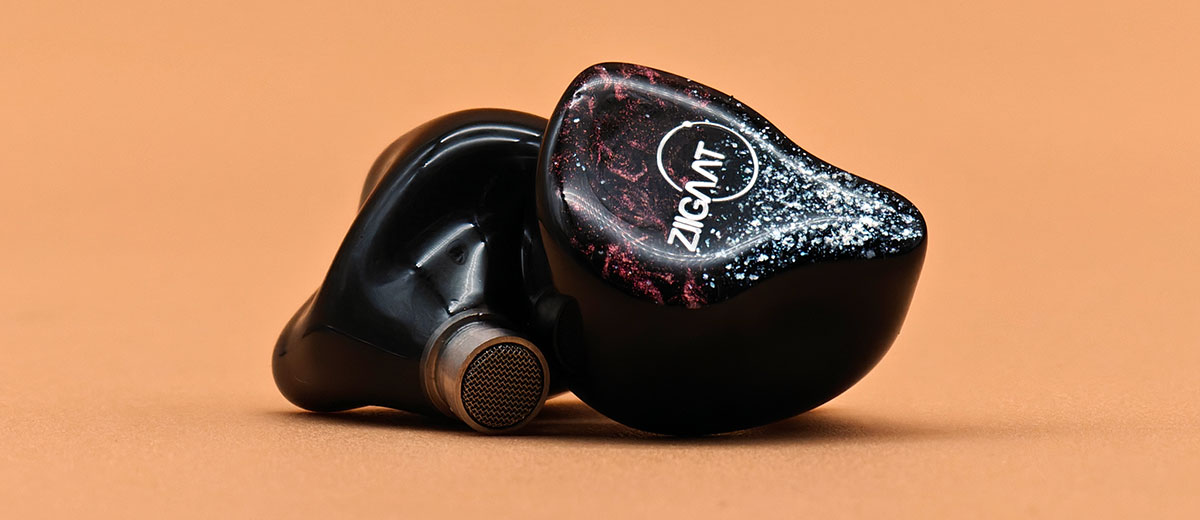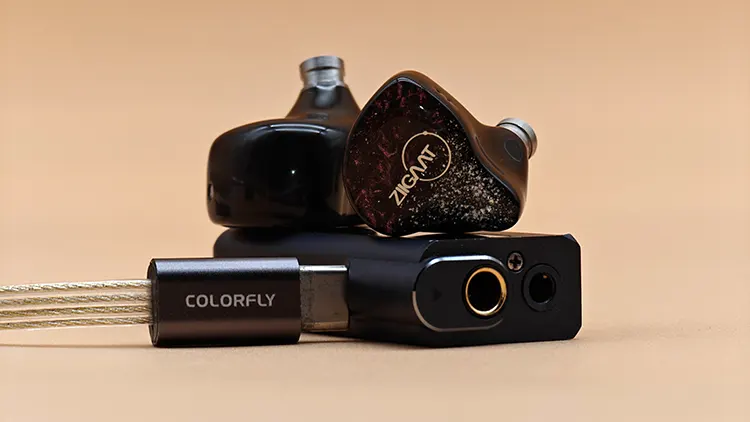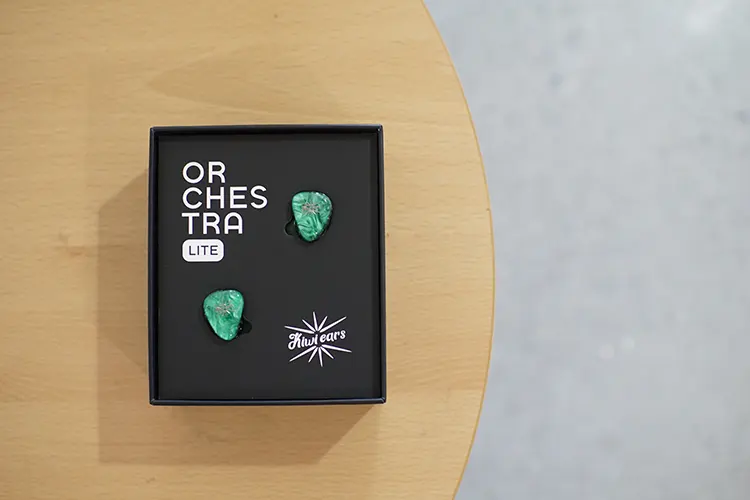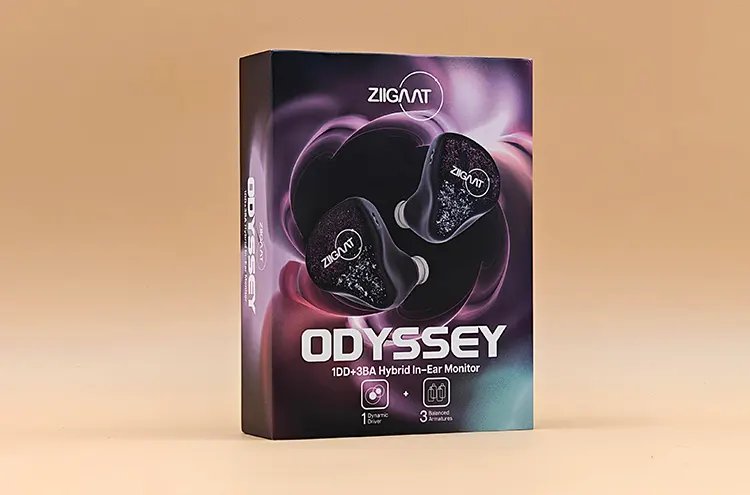Synergy
Efficiency
The ZiiGaat Odyssey has a sensitivity of 104 dB/mW and an impedance of 18Ω, making it an easy-to-drive IEM. It doesn’t require a powerful amp or DAP to achieve satisfying volume levels, further emphasized by the absence of a 4.4mm balanced adapter in the package.
At lower volumes, the bass presence diminishes significantly to the point where the dynamic driver feels almost nonexistent. However, the mids and treble maintain their performance, ensuring the overall presentation doesn’t feel completely hollow.
When pushed to higher volumes, the bass makes a noticeable return, adding depth and balance to the sound. Despite the increase in bass, the mids stay smooth and controlled, while the treble remains consistent without becoming overly bright or sharp.
The Odyssey uses a standard 3.5mm termination, which works with most devices. There are no balanced or alternative terminations included, which might be limiting to some users.
Pairings
Using the ZiiGaat Odyssey with a phone’s 3.5mm jack is simple and gets the job done. There isn’t any sound coloration, but I had to turn the volume up to around 70% to get the bass to feel satisfying.
With portable dongles like the FiiO JA11, the vocals become noticeably brighter. It’s slightly on the shouty side, but it doesn’t go far enough to ruin the listening experience and still feels manageable.
When paired with the Colorfly CDA-M2, the mids feel more present, making vocals sound closer and more engaging. Even with the added forwardness on the vocals, the Odyssey still keeps things smooth.
Using the HeartField R1 surprisingly improves the treble, making it more detailed and resolving. It also helps reveal some of the hidden elements in tracks, giving a better sense of clarity.
Select Comparisons
HeartField Blanc
Technical
The HeartField Blanc features five balanced armatures, each designated to specific frequency ranges for optimized sound reproduction. The exact model or specifications of the balanced armatures are not disclosed.
The driver configuration includes one balanced armature for low frequencies, two for the midrange, and two for the treble. Each balanced armature handles a set of dedicated frequencies to improve separation and clarity.
HeartField also integrates its PUR Technology, which enhances the acoustic properties of the drivers for improved soundstage and tonal accuracy. It helps lower the BA timbre that’s expected from all BA IEMs.
Design
The HeartField Blanc features a beautiful one-piece German resin housing, merging the faceplate and shell into a unibody design. The surface has a marble-like texture with gold flakes and Chinese characters, offering a highly visually pleasing aesthetic.
Its shell design accommodates a longer nozzle, which ensures deeper insertion into the ear canal. It’s a design more seen on custom molded IEMs, but it only adds more comfort when wearing it.
HeartField also claims they’ve spent 3000 hours perfecting the Blanc’s ergonomic shape. The resin material enhances comfort and durability, allowing for extended listening without strain
Performance
When it comes to bass, the ZiiGaat Odyssey takes the lead with its thumping low-end that the HeartField Blanc can’t match. While the Blanc struggles, delivering a boomy subbass, the Odyssey provides a satisfying presence, even if it’s not particularly strong.
The midrange comparison makes things interesting. The Odyssey keeps things smooth and enjoyable, but the Blanc introduces vocal harshness that’s hard to ignore. It feels scratchy and can get distracting in tracks where vocal clarity is the main point.
Their timbral consistency is quite good despite having balanced armatures handling it. That said, the Odyssey does outperform the Blanc by delivering heavier note weight and more texture, making instruments and vocals feel more lifelike.
The treble comparison is no contest. The Blanc stumbles here with a lot of sibilance, turning vocals into share,p fatiguing experiences, while the Odyssey’s darker and smoother treble offers a far more enjoyable listen.
For the detail retrieval, the Blanc fights back and impresses with its ability to uncover hidden elements in tracks that the Odyssey misses entirely. Tracks sound more analytical, revealing nuances the Odyssey leaves behind.
Soundstage and imaging are somewhat similar, but the Blanc showcases a wider, taller, and more immersive field. The Odyssey feels boxed in by comparison, but both manage precise imaging that keeps the experience correct.
Kiwi Ears Orchestra Lite
Technical
The Kiwi Ears Orchestra Lite is a full BA IEM, using eight balanced armature drivers, tuned to handle each frequency. There are 2 ultra-tweeters for treble, 4 drivers for the midrange, and 2 subwoofers to handle the low end.
It follows the same foundation as the original Kiwi Ears Orchestra for the tuning and 8 BA drivers. Despite being less costly, Kiwi Ears keeps the performance similar to the Orchestra while making it more efficient to drive.
A 3-way passive crossover system is used to ensure the transitions between frequencies are smooth and free of distortion. This setup keeps the bass, mids, and treble working together in harmony without one overpowering the others.
Design
The Kiwi Ears Orchestra Lite keeps things simple with its design, featuring a transparent shell and a clean, ergonomic shape. The faceplate resembles a guitar pick, adding a unique flair without feeling overdone.
It comes in either blue or green color options, each with a slightly quirky shade that stands out without being loud. The Kiwi Ears logo is placed neatly at the center of the shell, maintaining a professional and polished appearance.
The design leans toward a more professional finish, but it’s honestly quite boring. It does its job well, but the faceplate does bring a worry of it falling off like other IEMs.
Performance
The Orchestra Lite has a clean bass performance but struggles to deliver the subbass depth and presence of the Odyssey. The Odyssey’s rumbles add that missing texture and energy, making the Orchestra Lite’s bass feel like an afterthought in comparison.
Midbass follows a similar story, with the Orchestra Lite feeling more like a gentle vibration than an actual thump or boom. Going back to the Odyssey brings the missing punch and liveliness of the bass, making each track feel more impactful and engaging.
In the mids, both are great with timbre, but the Odyssey leans toward a meatier and heavier note weight. The Orchestra Lite’s note weight is slightly thinner but feels more intimate, bringing vocals closer and adding a clarity boost that the Odyssey lacks.
The treble is smooth for both, with no sibilance to worry about, but neither really shines when it comes to sparkle or detail retrieval. They both play it safe or even boring, focusing more on supporting the mids rather than standing out on their own.
The soundstage is where the Orchestra Lite leaves the Odyssey behind, offering a wider and deeper space that is more immersive.
However, even with the Odyssey’s smaller and quite cramped soundstage, it makes up for it with its precise imaging, keeping instruments and vocals well-positioned.
My Verdict
The ZiiGaat Odyssey offers a balanced sound profile with clean, textured bass, smooth mids, and a relaxed, non-fatiguing treble.
Rather than aiming for overpowering bass or overly bright highs, it focuses on delivering a sound that feels easygoing and enjoyable.
Its precise imaging and absence of sibilance make it a dependable choice for a variety of genres, games, and even movies. Whether for casual or extended listening sessions, the Odyssey’s laid-back tuning ensures a pleasant and fatigue-free experience
ZiiGaat Odyssey Technical Specifications
- Driver Type: One (1x) 10mm custom Topology dynamic driver, two (2x) Knowles RAF 32873 full-range balanced armatures, and one (1x) Knowles RAD 33518 ultra-frequency
- Plug: 0.78mm 2-pin with 3.5mm termination
- Frequency Response: 20Hz – 40kHz
- Impedance: 18Ω @ 1kHz
- Sensitivity: 104 db/mW





